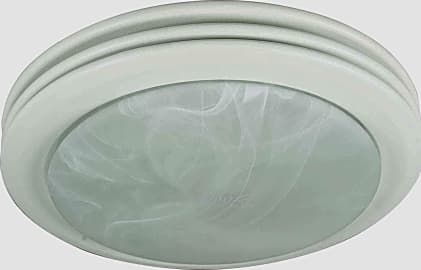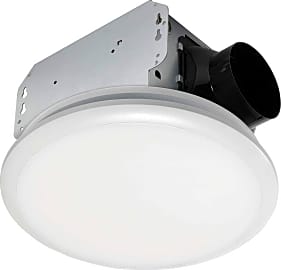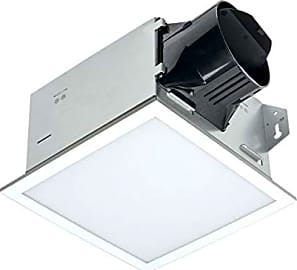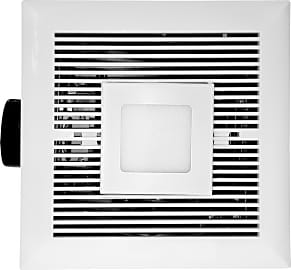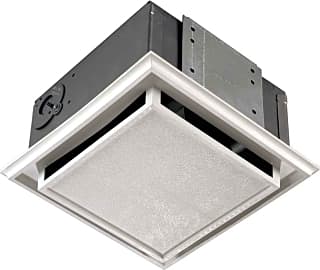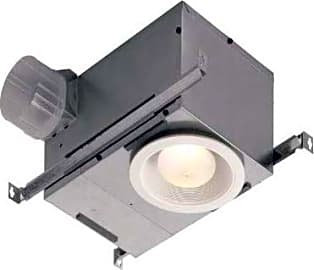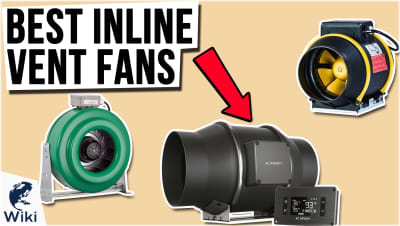The 10 Best Ventilation Fans With Lights

This wiki has been updated 21 times since it was first published in October of 2019. Though they're becoming less popular with the rise of central exhaust systems and heat recovery ventilators, ventilation fans are still often used in residential construction to remove unwanted humidity and odors – usually from bathrooms and kitchens. Our selections here take things a step further by doubling as light fixtures, and are suitable for new builds as well as retro installations. When users buy our independently chosen editorial choices, we may earn commissions to help fund the Wiki.
Editor's Notes
January 21, 2021:
It was a fairly straightforward round of updates, as the vast majority of our previous picks seem to have endured the test of time since we last visited this list. The only real substantive changes we made this time around were removing the Panasonic FV-0511VQCL1 due to availability issues, and replacing it with the Homewerks 7141 — which emits 900 lumens, and is available in three sizes from 50 CFM to 110 CFM.
If you’re looking into this purchase in an effort to battle surplus moisture in your home, then you might also be interested in our rankings for dehumidifiers.
If you’re not sure where to start with your decision, then check out our October 31, 2019 editor’s note for this page, which has some helpful buying tips for this category.
October 31, 2019:
The primary purpose of a ventilation fan is to remove unwanted odors and humidity from a room. In a residential context, this is typically accomplished by exhausting air through flexible or ridgid ducting, out of a roof-mounted vent hood or even through the home's soffit (a trick generally reserved for retro installations). Our rankings for this category consist of fans that go a step further, and double as a light fixture by incorporating an LED panel or a light-bulb socket. These options are especially great for renovations, as they allow homeowners to maximize the level of light in the room without increasing the amount of rough-in electrical work required.
Some things to look for while you shop:
Loudness: While most homeowners are willing to tolerate a mild hum, some might be less okay with an exhaust fan that growls like a lawn mower. While none of the models you’ll find ranked here should be nearly that loud, there is some variability in the level of noise these devices will generate.
Noise levels for ventilation fans are typically measured in sones, a unit used to describe the perceived loudness created by vibrations. Unlike decibels, sones are a linear metric; so, two sones are perceived as being twice as loud as one sone, just as four sones are perceived as being twice as loud as two sones, and so on. A typical point of reference that's offered up, when discussing sones in the context of exhaust fans, is that one sone is equal the volume of a quiet refrigerator, running in a quiet room.
Fan Strength: This property is usually measured in cubic feet per minute. You can assume that 1,000 CFM fan can change the air in a 10-foot by 10-foot room with 10-foot ceilings in 1 minute, and so on. A common rule used by HVAC professionals looking to do a fast calculation is that in bathrooms, the CFM of an exhaust fan should exceed the square footage of a bathroom with eight-foot ceilings. So, if your bathroom with eight-foot ceilings measures eight feet by 10 feet, your exhaust fan should have a rating of no-less-than 80 CFM.
Integration: This is a thought that’s worth consideration both in respect to the rough-in and finishing stages of this installation.
In terms of rough-in, make sure that the unit you're considering is compatible with the ductwork you’re connecting it to. If you’re trying to connect a run of three-inch flexible ducting to a four-inch fan, you’re going to need a reducer. If you’re trying to connect a length of round, four-inch ductwork to a fan with an oval, four-inch takeoff, you’re going to need an adapter.
In terms of finishing, if you’re concerned that your ventilation fan might add up to an eyesore on your ceiling, consider options like the Broan-NuTone 744 – which looks very much like a standard, six-inch pot light, or the Air King DRLC702 – which looks very much like a common, ceiling-mounted light fixture.
One last thought worth mentioning: If you’re looking to reduce unwanted smells in your kitchen or bathroom, but you’re feeling overwhelmed by the enormity of the task that is running a new exhaust line to said room, you might want to consider a circulating option like the Broan-Nutone 682, which moves air through a charcoal filter to help mitigate odors. However, it should be noted that circulation will do very little in terms of humidity, relative to exhausting methods.


